Can the bandage dress survive another revival?
The bandage dress, that mid-’80s invention that was dubbed “the sexy mummy look” for its bands of garter-like horizontal strips that molded the body into an ideal shape despite sins of overindulgence, has witnessed a resurgence lately—turning the spotlight on Hervé Léger, the fashion house that popularized the controversial garment for the clubbing era, as well as Michelle Ochs, the Filipino-American designer who is now the brand’s creative director.
The brand actually opened its first Asian boutique in the Philippines in 2014 when a splashy launch featured brand ambassadors led by the country’s style setters.

“It’s time! Gen-Z deserves the revival,” wrote Ochs in her Instagram post with a photo of Kaia Gerber, wearing the house’s white bandage gown at the Toronto International Film Festival last September when the dress started a buzz and spread like wildfire on social media. It was a recreation of the one worn by Gerber’s mother, the supermodel Cindy Crawford, to the Oscars in 1993 with Richard Gere.
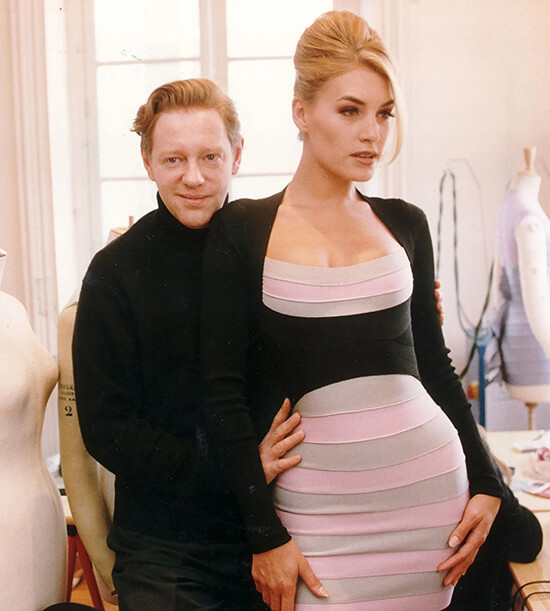
“So much of the new generation that’s discovering the brand for the first time wants to get dressed up, yearns for connection and going out,” observes the designer who previously had her own atelier and had clients like Michelle Obama and Beyoncé. There’s also a craving for nostalgia as Gen-Z digs up blasts-from-the-past looks, seeing them with fresh eyes.

“They’re attracted to the silhouette for the same reasons millennials once were. It makes the body look incredible; it’s sexy and simple,” says celebrity stylist Cassy Meier, who dressed Suki Waterhouse in a pink Léger for her Blackout Drunk music video. Another visible proponent is Hailey Bieber, who wore a plum-colored version by Anthony Vaccarello for Saint Laurent at the Fashion Trust US Awards and recently donned a ’90s Leger in black, red and white which fashion critic Kim Russell declared as “criminally hot.”
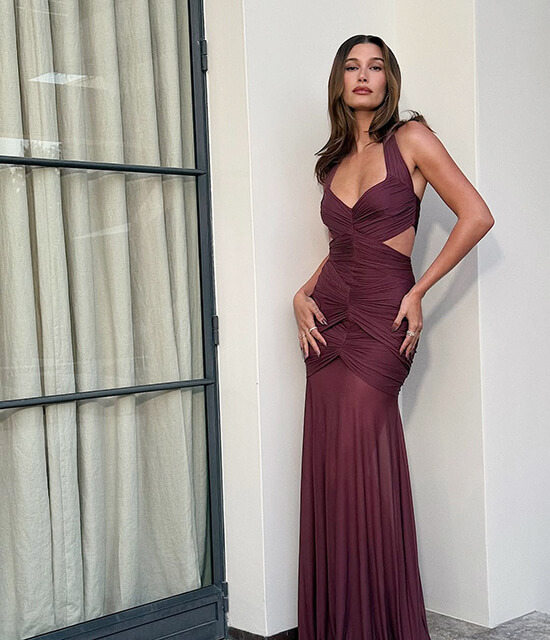
Although the bandage dress has become synonymous with Léger, it was actually invented by Azeddine Alaïa who first showed it in the early 1980s as a response to all the mannish power dressing that altered a woman’s figure. Inspired by Egyptian mummies, his body-con dresses celebrated the feminine, emphasizing the natural curves through his cuts and silhouettes which earned him the title, “The King of Cling.” It allowed women “to be held as tightly as possible—while remaining free,” in the words of French philosopher Michel Tournier. It made such an impact that Alaïa was chosen “Creator of the Year” at the 1985 Oscar De la Mode awards in France.

Léger, who was actually born Hervé Peugnet, changed his name upon the advice of Karl Lagerfeld who said it would be easier to remember in the American market. After working with Lagerfeld at Fendi and Chanel, he established his own house in 1985 and released his version of the bandage dress in the early 1990s. But while the Alaïa version was softer as it wrapped the body, the Léger was more constricting like girdles or foundation garments.
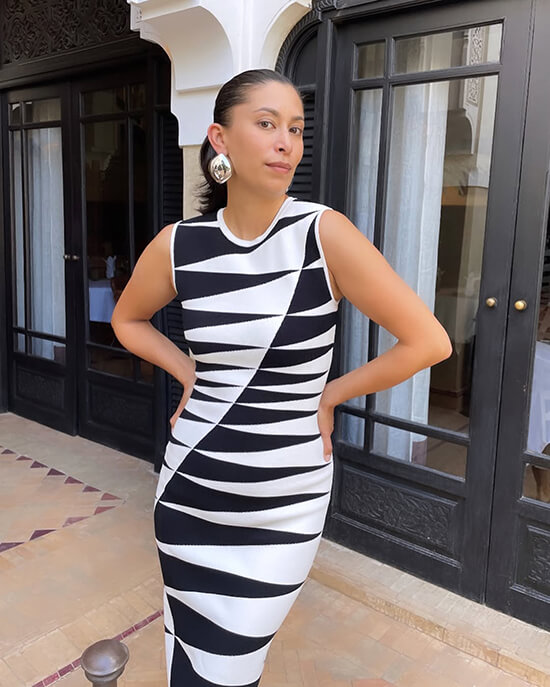
Crawford compared them to “Ace bandages” that could be quite uncomfortable but she said all the supermodels like Naomi Campbell and Linda Evangelista gravitated towards it anyway since “it was a chic way to show your body but not trashy.” With Jane Fonda’s aerobics videos selling out at that time, the dress was a bragging medal for all the hard work at the gym.
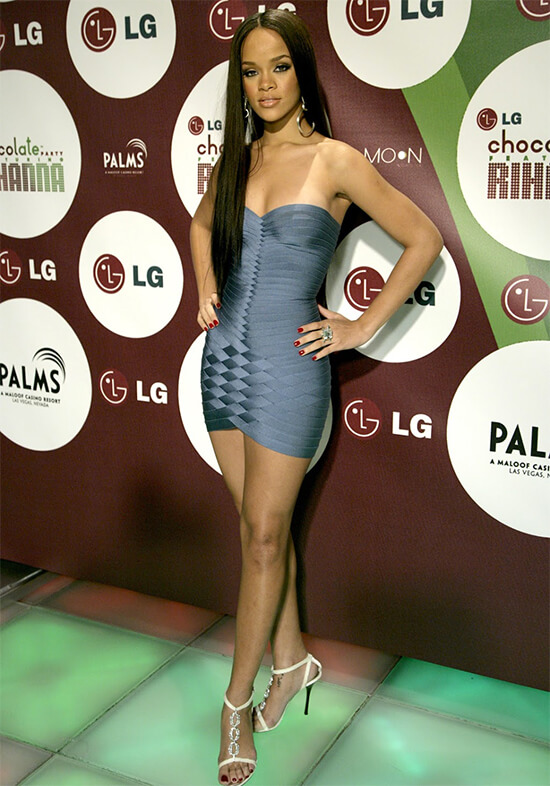
Two decades later, when the celebrity replaced the supermodel, the bandage resurfaced again on Rihanna, Britney Spears and Victoria Beckham (Posh Spice then) on the red carpet. When “it” girl Lindsay Lohan wore one to the Maxim party in 2007, it became associated with the decadence of mid-aughts club culture. Emma Watson was dancing, taking selfies and ordering bottle service wearing a magenta one in the quintessential 2013 Sofia Coppola film The Bling Ring.
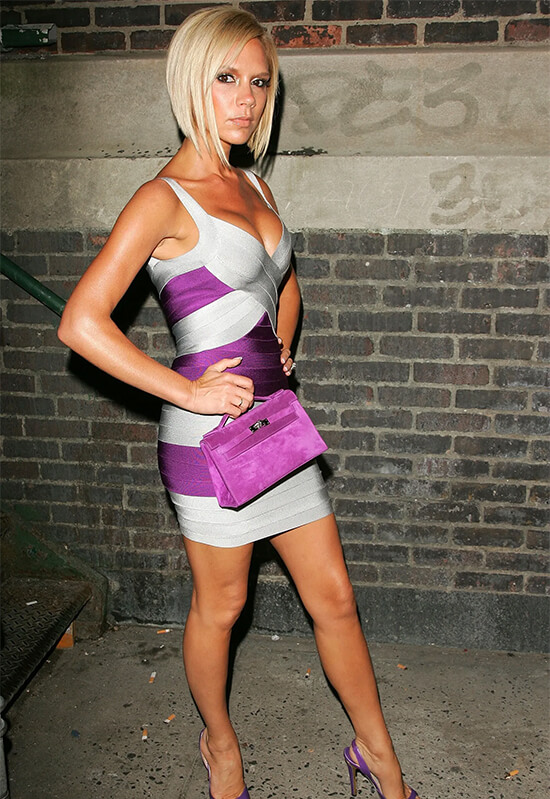
With the current revival, Google Trend reported searches for “Bandage Dress” at an all-time high while global eBay users looked for “Hervé Léger” more than 23 times a minute on average. But critics wonder, with clubs and nightlife fading in many places, where in the world are people wearing it? If people are taking their cue from celebrities, the clubbing staple is actually making a segue to formal events as a classic going-out dress.

Even Hervé Léger itself is going for anti-club bandage dressing. “We’re modernizing it with fresh proportions, new fabrications, and refined hardware details, expanding beyond the iconic mini into midi dresses, sculpted separates and even daywear,” says Ochs who introduced refreshing, streamlined separates: pants, jumpsuits, and tops aside from bandage dresses, evening gowns and frocks with fringes. “We’re introducing the brand to a whole new generation who’s hungry for this look and silhouette. They’re discovering it for the first time, drawn to the confidence, the sexiness and power it represents, and we’re giving them new ways to wear it that feel relevant to how they live now.”
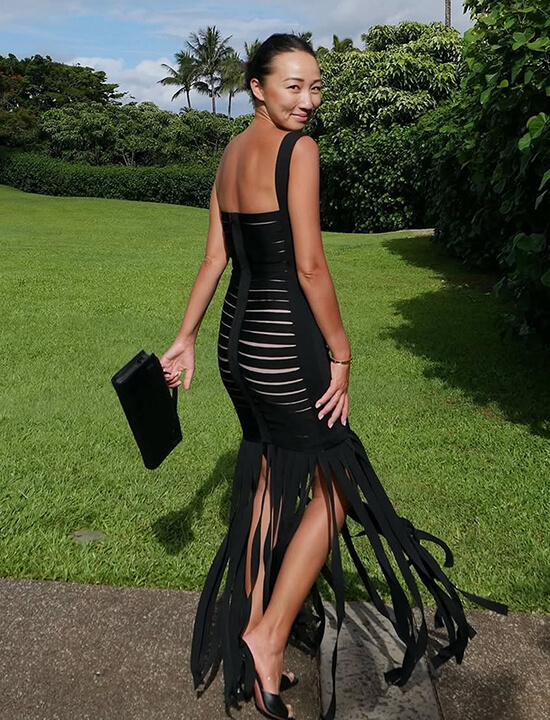
The bandage may be back, but the culture around it has certainly changed. Although we’re now in an Ozempic era with a new form of body-consciousness and diet culture, not to mention what New York Times fashion editor Vanessa Friedman calls “a political climate in which cartoonish versions of femininity are the preferred paradigm, a way of dressing backward at a time when it can seem as if society itself is going backward,” we have still progressed somehow from the toxic traits of the 2000s, body shaming and all—ushering in a period of adopting styles in new ways that suit us, reflecting our uniqueness and individuality as well as the times that we live in.


